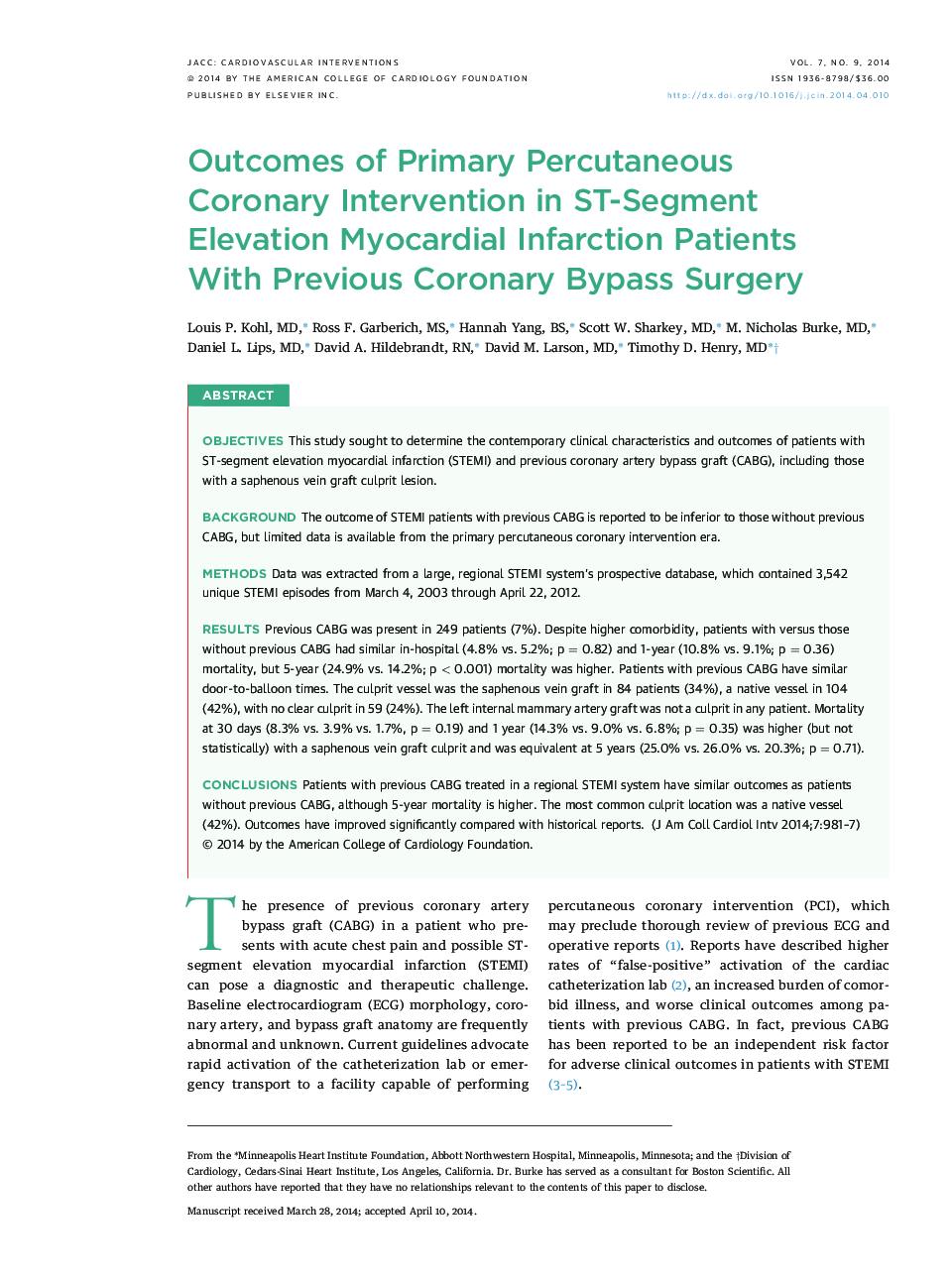| Article ID | Journal | Published Year | Pages | File Type |
|---|---|---|---|---|
| 2940062 | JACC: Cardiovascular Interventions | 2014 | 7 Pages |
ObjectivesThis study sought to determine the contemporary clinical characteristics and outcomes of patients with ST-segment elevation myocardial infarction (STEMI) and previous coronary artery bypass graft (CABG), including those with a saphenous vein graft culprit lesion.BackgroundThe outcome of STEMI patients with previous CABG is reported to be inferior to those without previous CABG, but limited data is available from the primary percutaneous coronary intervention era.MethodsData was extracted from a large, regional STEMI system’s prospective database, which contained 3,542 unique STEMI episodes from March 4, 2003 through April 22, 2012.ResultsPrevious CABG was present in 249 patients (7%). Despite higher comorbidity, patients with versus those without previous CABG had similar in-hospital (4.8% vs. 5.2%; p = 0.82) and 1-year (10.8% vs. 9.1%; p = 0.36) mortality, but 5-year (24.9% vs. 14.2%; p < 0.001) mortality was higher. Patients with previous CABG have similar door-to-balloon times. The culprit vessel was the saphenous vein graft in 84 patients (34%), a native vessel in 104 (42%), with no clear culprit in 59 (24%). The left internal mammary artery graft was not a culprit in any patient. Mortality at 30 days (8.3% vs. 3.9% vs. 1.7%, p = 0.19) and 1 year (14.3% vs. 9.0% vs. 6.8%; p = 0.35) was higher (but not statistically) with a saphenous vein graft culprit and was equivalent at 5 years (25.0% vs. 26.0% vs. 20.3%; p = 0.71).ConclusionsPatients with previous CABG treated in a regional STEMI system have similar outcomes as patients without previous CABG, although 5-year mortality is higher. The most common culprit location was a native vessel (42%). Outcomes have improved significantly compared with historical reports.
